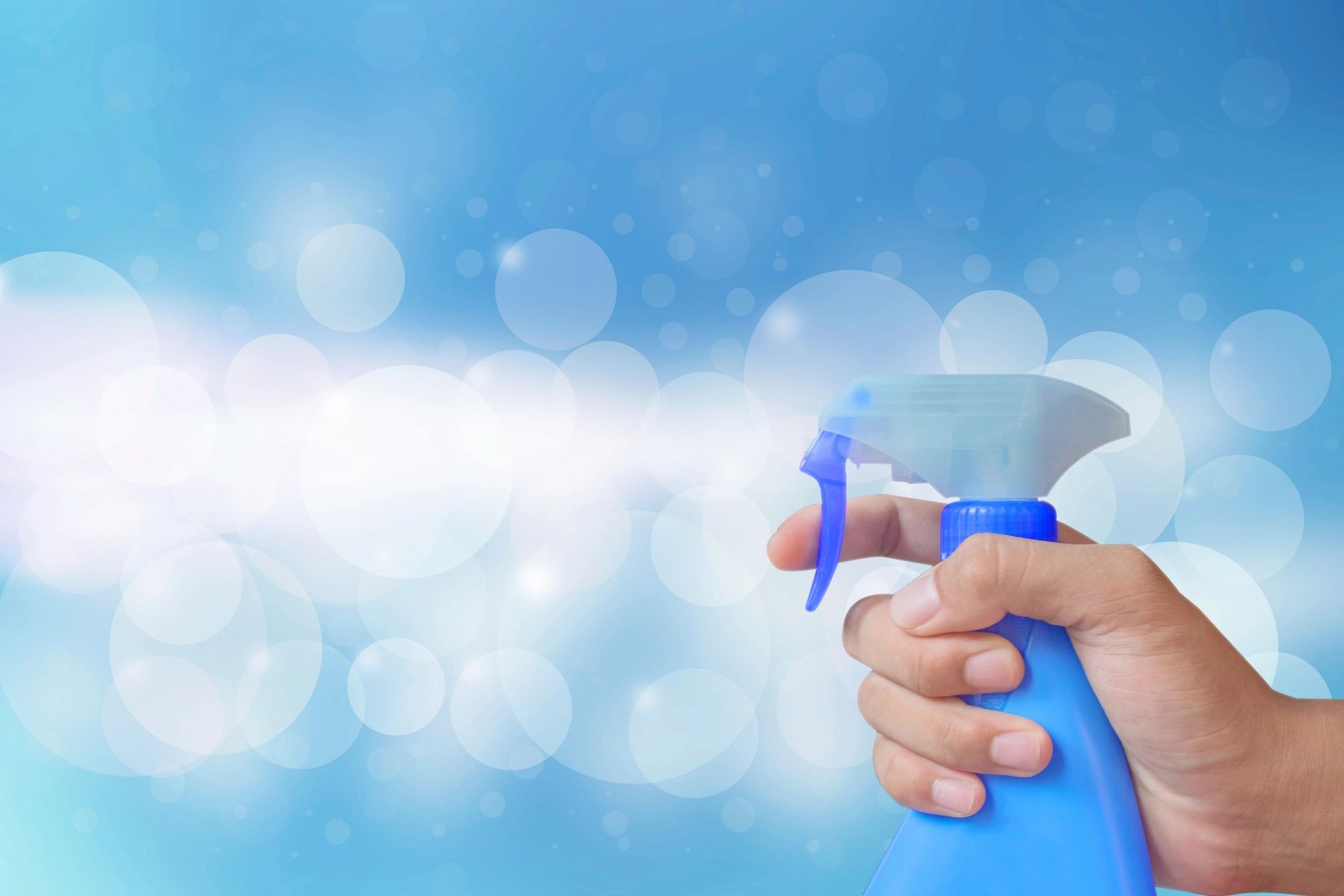WHAT TO DISINFECT IN OUR HOME AFTER A FLU AND HOW

With the colds and flu virus being in season, you or someone in your home might have caught the virus and stayed and rested at home. As a safety precaution you might have the patient isolated in one room. Other members of the household were prohibited from making contact with the patient so they will not be able to contract the virus.
As cautious as you are during the medication and recovery period, must the infection control effort end when the patient is already deemed well and virus-free? You have to remember that a virus, which in this case is the Flu, can thrive on hard surfaces for up to fourteen days. So there must be a post-flu protocol in your home that you need to follow.
Top of the to-do list, post-flu is disinfecting the home. This is to ensure that the viruses will not anymore linger in our home and there will be no further infection to other members of the family.
So what are the things we need to do to disinfect our homes after a household flu?
Deep-clean and Disinfect the Bedroom
A flu-infected member of your family might have been isolated in his own room. Therefore it can be said that most of the virus is concentrated in this room. This room then needs the most and deepest cleaning and disinfecting.
Pajamas. For certain if you were strapped to your bed to heal from the flu, you would have worn pajamas. And, if this is in the closest contact to your body, this must be disinfected. The pajamas or clothes worn by an infected member of the family must be washed immediately instead of having them piled in the laundry basket or chute.
Wear gloves when you handle these items so as not to contaminate your hands and increase the chances of infection when you touch your face and body.
Bed linens. Very much like the clothes you wear when sick, the bed linens are also highly exposed to the virus. Blankets, pillowcases, bed sheets, comforters and others – these are also in close contact to your body. Wash them immediately and do not wash them together with other clothes for laundry.
Bed-side table items. What are the usual items that you see on your bed-side? The lamp shade, books, alarm clock, your phone, remote control and others – these need to be disinfected as well. You can wipe them down with a disinfectant cleaner.
Door and cabinet handles. You may have once opened the door and cabinets to get some stuff or if you were visited by another member for caregiving. This can also pose greater risk since the virus can be transferred via hands. This should be done at least once a day and more frequent if the virus is of greater strength.
Disinfect the Bathroom
Viruses can be transferred also through droplets and body fluids. Think of someone who is seriously ill with bouts of vomiting and diarrhea. The catchment area is the bathroom. And, whenever someone vomits or relieves of himself in the bathroom, tiny particles might be left everywhere. They must be cleaned right away.
The items and fixtures in your bathroom that need immediate washing and deep disinfecting after the use of an infected person are:
- Faucet knobs and flush handles
- Toilet lid and seat
- Toiletries
- Bathroom door and cabinet knobs
- Light switches
- Towels
- Floors
- Trash Can
It is also recommended that the infected person must have a designated towel for his use and that this be changed frequently while he is still recovering. In washing, this must be soaked in hot water and dried at high temperatures to eradicate bacteria that linger in the towel. Better to make use of paper towels instead and immediately dispose of them after use.
For a toothbrush used by the infected person, this must be thrown out and the toothbrush holder must be disinfected as well.
Clean the living room and disinfect furniture and fixtures
The living area, being the most common space in the house must be at all times, free of viruses and bacteria. If the living room is contaminated with the virus, the spread to other members of the family will be most likely. It is also best for the sick person not to be staying in the common space in the house. But, in instances when that sick member, especially a child, cannot take the isolation and would want to still be very much present in the living area, you must do disinfection right after.
Wipe tables and other hard surfaces in the living room. Remote control, the phone, board games that were handled and touched by the infected person must be disinfected as well. You can use disinfectant wipes or other disinfectant cleaners.
Sanitize and disinfect the kitchen
The kitchen where food is being handled and prepared must be thoroughly sanitized and disinfected. Food preparation for the sick member of the household must be done with utmost care so that bacteria and germs will not spread to other members.
You must prepare separate utensils for the exclusive use of the sick member. When washing these after his use, you must wash it at high heat if using the dishwasher. But if you must wash these with your hands, you can first soak it in a disinfectant solution of chlorine bleach and water.
The use of sponges at this time is not advisable as this can be a bed for bacteria growth. Paper towels are recommended or cotton cloths that can be washed in hot water.
Wipe down the tables, counters, kitchen appliances and other hard surfaces that are regularly used to keep them disinfected.
Post-illness care
We are very cautious every time a member of our family gets sick and sometimes only during the time that they are. But special care must be done post-illness. If the environment is left contaminated with the virus, the sick member can relapse and get infected again, or another member can be.
So, equal attention and care must be done most especially after an illness. Cleaning and disinfecting are a must.
